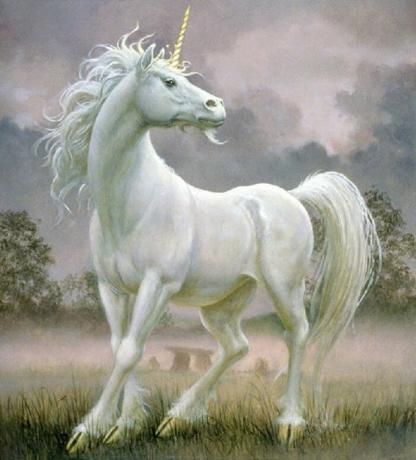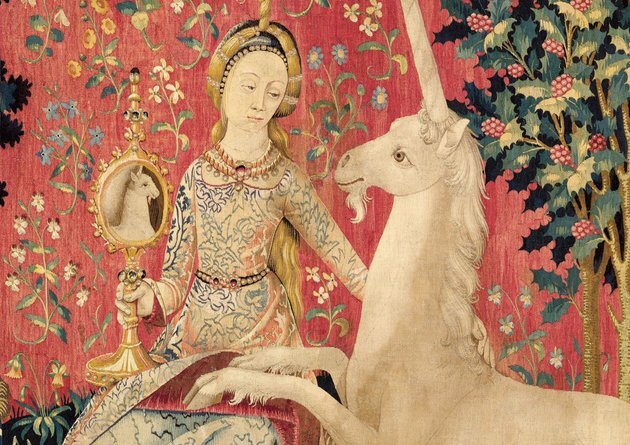O unicorn is a mythological figure from the Orient.
His story was probably brought by merchants who made the route from the Orient to Europe.
Origin
The unicorn figure does not belong to any particular mythology, but was incorporated into medieval European imagery and used to explain concepts of Christianity.
The unicorn would be a horse with a horn, which could be spiral or smooth, a goat's goatee and a split hoof. The coat is white or silver, and the feet had smooth and abundant hair.
He would have a docile temperament and spent his days grazing peacefully, causing no harm to anyone.

Its horns and fur would have healing properties and were coveted by hunters. However, as it would be an extremely fast and strong horse, its capture was practically impossible.
However, the only way to hunt him would be with the help of a virgin, because the unicorn was attracted to a creature as innocent as himself. Only in this way would the animal become easy prey for its captors.
Meaning
The unicorn myth has been used in the Christian religion, arts and psychology. Currently, the unicorn has been recovered by entertainment companies, children's literature books and even in the language business.
Let's see below how each of these areas uses the unicorn figure.

Christianity
Because of its purity, the unicorn was associated with Mary's virginity. Likewise, it was used to personify the incarnation of God in Jesus.
The unicorn, however, can symbolize evil and, in this sense, appears portrayed as a wild beast in some biblical translations.
Atheism
For their part, atheists use the image of the 'invisible pink unicorn' to humorously criticize theistic religions and their beliefs.
psychology
Psychoanalyst Carl Jung (1875-1961) used the horned horse archetype to illustrate both purity and lust. In this way, the unicorn represents duality and opposition.
As the unicorn has no defined sex, it symbolizes the androgyny and vagueness of a sexual gender. Likewise, being attracted to virgins and possessing a horn would mean the attraction of men to an untouched woman.
Literature
The unicorn is a mythological figure that appears in several stories of children's literature as in the work "Alice in Wonderland" (1865) by Lewis Carroll. We also meet these mythological beings in the fantasy novel series "The Chronicles of Narnia", published between 1950 and 1956.
The works of J. K. Rowling, "Harry Potter", published between 1998 and 2007, also make references to these fantastic beings. All of them had film adaptations.
Business
The American businesswoman Aileen Kee (1970) sought in the mythological figure of the unicorn, a symbol to characterize startups with special attributes. Since then, the horned horse has become an icon of successful start-ups.
Curiosities
- The Cuban singer and composer Sílvio Rodriguez (1946) created the song 'Unicórnio Azul' whose lyrics are a lament for the disappearance of his blue unicorn. This can be interpreted in many ways as loss of inspiration, love and even the cap of a pen.
- In 2010, a movement titled 'seapunk' conquered social networks and singers pops, influencing mass culture. The colorful unicorn aesthetic has spread around the world inspiring artists, makeup, costumes and clothing.
read more
- Middle Ages
- Myth and Philosophy
